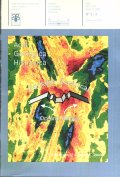La Dorsal Medio-Atlántica entre 24N y 30N
Abstract
The Mid-Atlantic Ridge between the Kane and Atlantis fracture zones (24'N-3O0N) is a slow-spreading ridge (half-spreading rates between 10 and 14 mm/y) intersected by 17 non-transform discontinuities (offsets between O and 30 km). These discontinuities, together with the two fracture zones, bind 18 spreading segments, 50 km long in average.
The location of these non-transfom offsets has been mapped from both gravity and SeaBeam bathymetric data covering an area 60 km wide and 800 long km over the ndge mis. The absence of a thick sediment cover that tends to obliterate the original seafloor morphology has ailowed us to assemble a map of seafloor faults for this region. Intense faulting of the oceanic crust is initiated away from the axial valiey floor, where volcanic processes dominate, and only rninor faults not visible on SeaBeam occur. Variations in faulting style along the strike of the ridge are related to ridge segmentation, with long segments containing long faults oriented 15OE. In shorter segments faults have a considerably shorter trace and have a different orientation (30°E) with respect to those occuring on longer segments. The along-axis variations in faulting style is accompained by variations of the asymmetry of the axial rift valley. The axial valley tends to be symmetric in the center of the segment (small amount of crustal extension) and becomes an asymmetrical half-graben (greater crustal extension) in the proximity of the bounding discontinuities. Since the spreading rate does not vary considerably along the single segments, this tectonic variability reflects a decrease of the magma supply rate along each segment axis away from the center towards the distal ends.
Gravity anomaly profiles show that crustal thickness decreases from the center of the segment towards the discontinuities and/or that the density of the underlying mantle increases away from the segment center. The data also shows that along-axis topography is mainly isostatically compensated, while across-axis relief is dynamically maintained by internal stresses in the oceanic crust. The gravity data and morphological observations suggest that convection in the upper mantle is segmented, with the presence of upwelling plumes centered in each of the segments. The plumes would be responsible for higher melt supply rates in the center of the plume than near the discontinuities. Consequently, the amount of extension of the oceanic crust will also increase away from the: segment center towards the discontinuities. This accreting structure is also responsible for ,he variations in crustal thickness inferred from the gravity structure.


